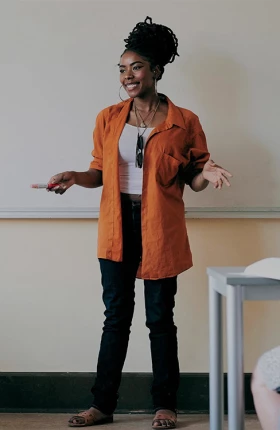The Obstacle
Despite high student enrollment, the School Education Department in Rajasthan faced a learning crisis, with nearly 88% of fifth-grade students struggling with basic division. In a trend reflected nationwide, literacy and numeracy skills, especially among primary grade students, dropped significantly in 2022 in the wake of the pandemic. As a result, many children were falling up to two grades behind.
Poor foundational education limits the future opportunities and productivity of students, which in turn contributes to a cycle of poverty—perpetuating a pattern of economic disadvantage from one generation to the next. To improve the situation, the education department adopted an ambitious, AI-based solution focused on grades three through eight to improve teacher effectiveness.
This was the largest AI deployment in the public education arena undertaken to date within Rajasthan. BCG, together with the Michael & Susan Dell Foundation in India, supported the process in a partnership that included problem diagnosis and solution design, data-technology integration, and project management—with a focus on shifting from traditional rote learning to a competency-based learning system.
Our Approach
After a detailed analysis of learning gaps and challenges—and after engaging with core stakeholders, including teachers, school administrators, and government officials—BCG designed, developed, and helped deploy the AI-based system at the heart of the solution. The solution was deployed via the Shikshak app, a tool that breaks the teaching journey into microsteps—videos on how to teach competencies, for example. AI digitized and analyzed student assessments quickly and made personalized teaching recommendations based on student performance data.
The overall result was a reduction in manual effort, allowing teachers to focus on specific competencies and give greater attention to those students requiring extra support.
The Result
After we introduced the AI-based monitoring through digital assessment, we saw there was a marked improvement in learning-level competence. Once uploaded, the data up to the student could be analyzed. By this I mean we could aggregate competency-wise data at the student level, at the class level, at the school level, and upwards for policymaking. — Ashish Modi, Director, Secondary Education Department, Government of Rajasthan
Since the introduction of the new system, student learning outcomes have improved markedly.
- 400,000 students coming out of learning poverty
- 18% reduction in students lagging two or more grades behind
- Teachers only need 30-40 seconds per child to digitize student assessments, a task which previously took 5-6 minutes per child
Access to real-time classroom data has quickly identified where action is needed.
- AI tools have reduced the time spent on assessments and data entry, allowing more time for teaching, including targeted instruction
- Competency-focused report cards and updates have enabled more active participation from parents in their child’s education
- For policymakers, regular and reliable learning-outcome data has led to more informed policy decisions
Working with partners across education, policy, and technology, we were able to deploy an effective solution in Rajasthan—and demonstrate its potential scalability elsewhere.
There are definitely parts of the solution that are very modular and replicable in other contexts. Rajasthan is such a large-scale program that we’re very confident it could work in different settings, whether it’s other states in India or other countries in other parts of the world. — Samar Bajaj, Head of Education, Michael & Susan Dell Foundation India










